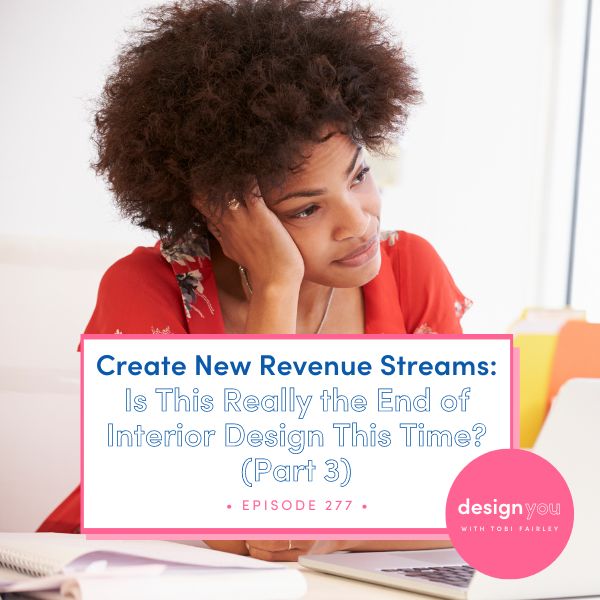
Welcome back to part three of my series discussing whether this is really the end for interior design as we know it. When I ask designers what they think they need in their businesses, they generally say better clients with more money, a marketing strategy, systems, and new or better revenue streams. I agree, we want all of these, but the one that seems to confuse people most is the revenue streams piece.
I’m currently in the midst of my revenue streams training (more on that below), so this is the perfect time to discuss how to develop new ideas for successful expansion. So, if you’re stumped about how you can create new sources of revenue and want answers, this episode is for you.
Tune in this week for a discussion about how to launch new revenue streams in your design business. I’m discussing why the most successful entrepreneurs are the ones who try new things with a willingness to fail, and why nobody can give you the exact methods you should launch, but there is a proven process for coming up with new streams in your design business.
Discover a new path to success in the Interior Design Industry with our live 3-part training: How To Create Additional Revenue Streams. Join us as we teach you the strategies to launch innovative income streams, freeing you from the limitations of traditional design services. Don’t miss this opportunity to revolutionize your business and thrive in today’s competitive landscape. Grab the Training Series now to prepare your business for today & beyond!





